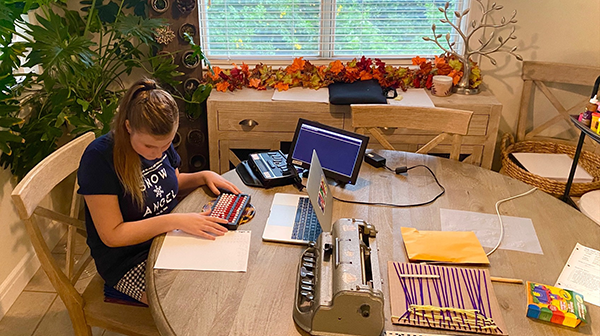I remember as a high school student in Freehold, New Jersey, anxiously waiting for the last bell to ring on the last day of the school year. That bell signaled a summer of freedom from homework and tests. At the same time it signaled that for a couple of months, there would be some friends I would not see or only see rarely. A few days later I’d find myself reflecting on what had gone well for me during the school year and what had not gone so well.
Taking the time to reflect on experiences helps us grow as we evaluate a situation from multiple points of view. As you think back on the 2020-2021 school year, one like no other, your reflections are probably more poignant this year than most. How did the COVID-19 pandemic impact education in your eyes? I, along with a research team from throughout the United States, want to know. In our Reflections on the Education of Students with Visual Impairments study through short surveys and focus groups, we’re learning about the experiences of family members, teenagers, general ed teachers, special ed teachers, paraprofessionals, early intervention providers, administrators, teachers of students with visual impairments, orientation and mobility specialists, and state department of education personnel. The study is open through June 30.
I’ll be honest: recruiting people for a study in June after a very long school year is an uphill climb. People are done for the year, so why participate in yet another research study? Here’s why I think participation is important. The more people share their experiences, the more of an impact we can make on ensuring that our students with visual impairments, including those with additional disabilities and deafblindness, have an equitable education. Without sufficient data from across the country from a wide cross-section of individuals, our research team will have difficulty drawing conclusions and making recommendations that families, educators, administrators, and policymakers can use to shape the future of education for our students.
On June 4, I had the opportunity to speak with 149 professionals in New York City Public Schools and share what we have learned about the education of our students in April 2020 through the first Access and Engagement study, in which 1,921 individuals participated; and in November 2020 through the Access and Engagement II study, in which 662 individuals participated. On June 7, I met with a small group from the Minnesota Department of Education to share recommendations with them that we have drawn from the data in the two reports. After both talks, I was thanked for providing evidence of how the pandemic has impacted education and for sharing the many recommendations in the reports of each study.
Our research team is at the ready to collect survey data and lead focus groups, then analyze the data, develop recommendations, and share the accessible report so it can be used widely. Please consider taking part in the Reflections on the Education of Students with Visual Impairments study if you qualify. We urge you to share this blog post with those in your network. Don’t assume others are burned out and won’t want to participate, give them the opportunity to decide for themselves. Please share this blog post!
And, if you’re in a school setting and that last bell of the year rings, kick back and enjoy the fun of summer vacation!
